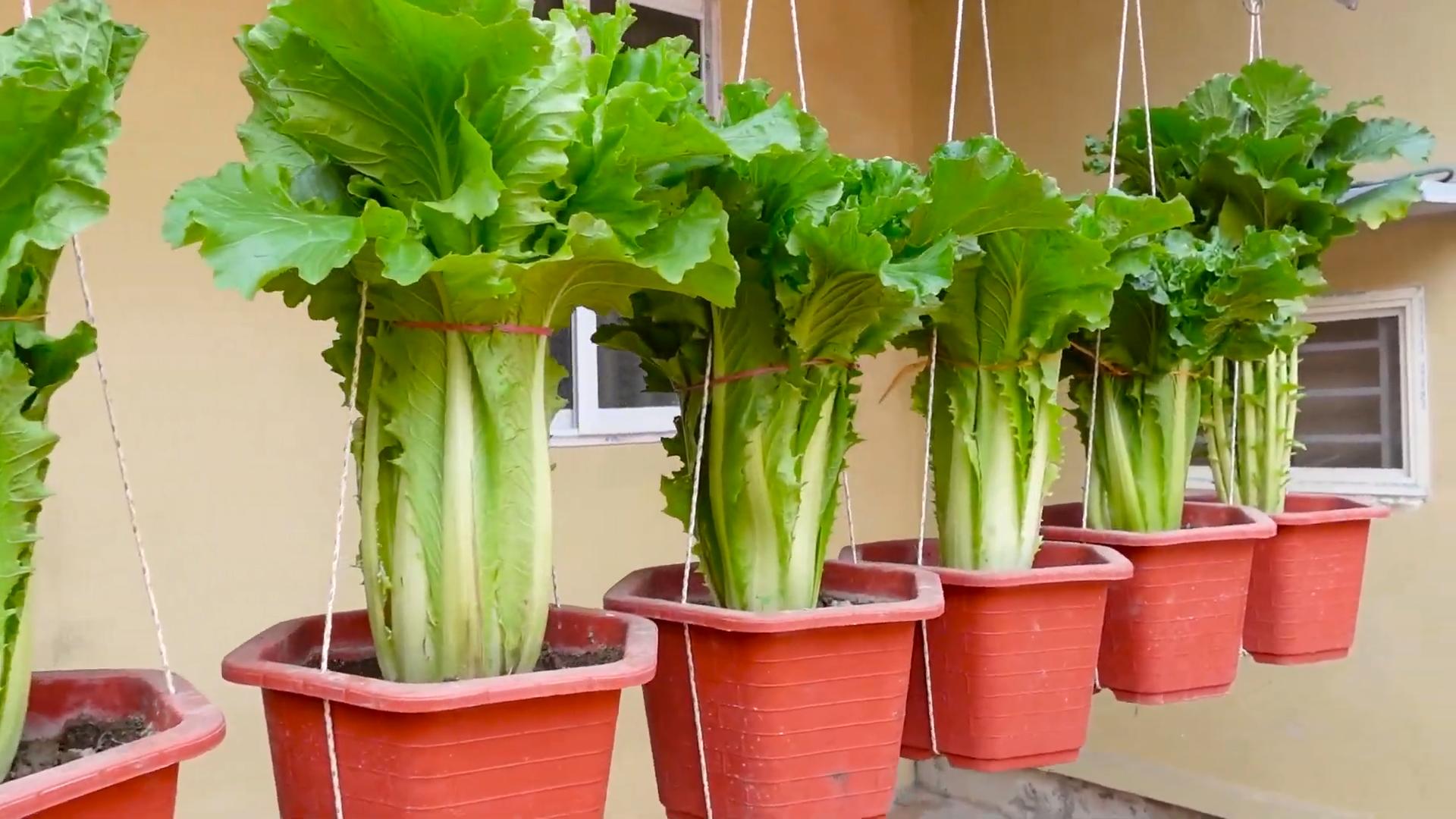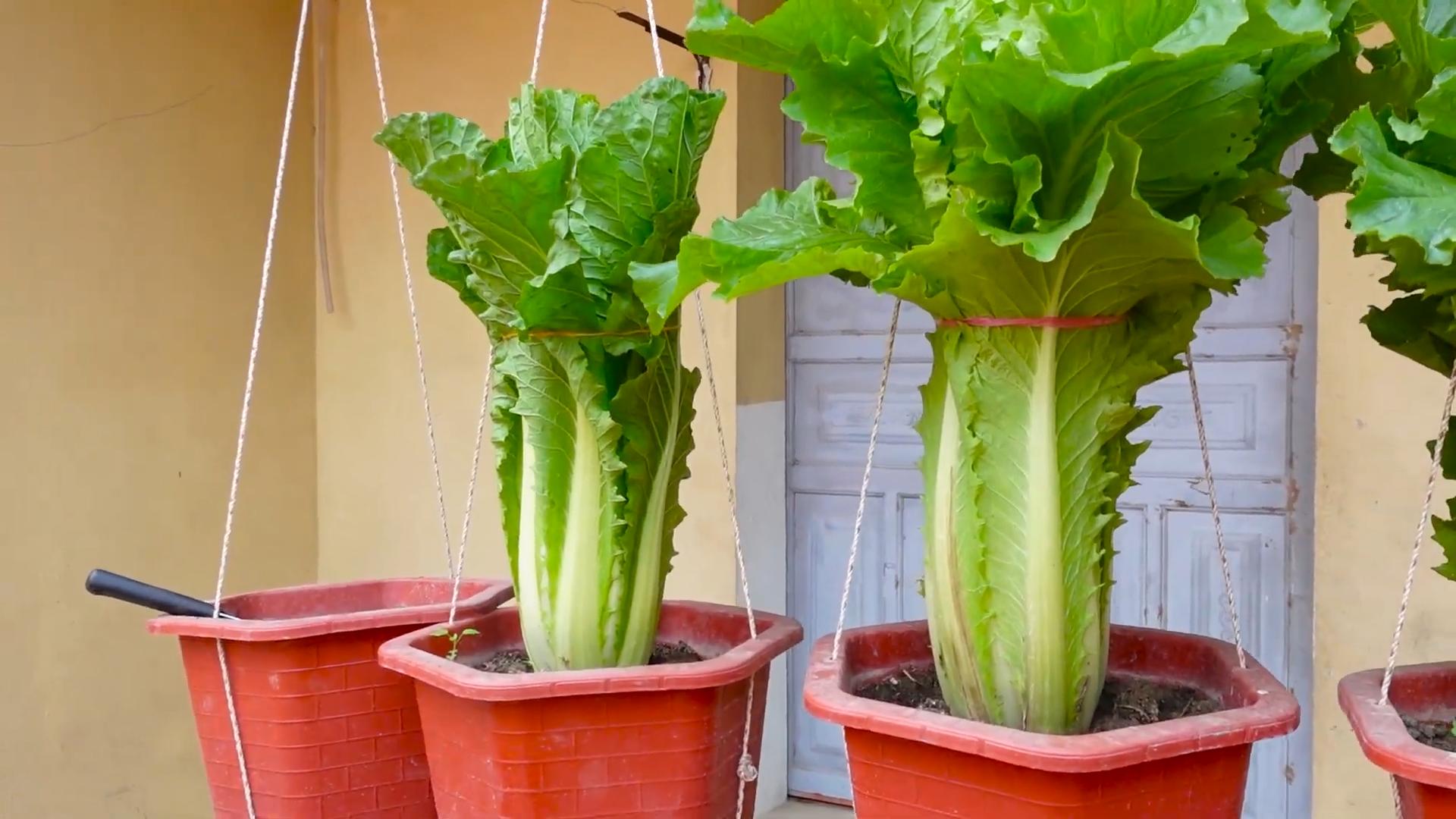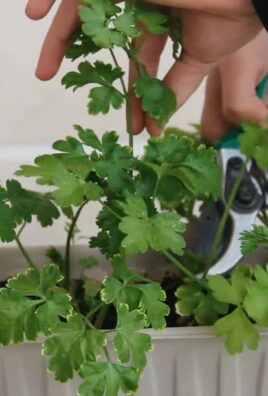Lettuce garden without garden? Absolutely! I know what you’re thinking: “Impossible!” But trust me, it’s not only possible, it’s incredibly rewarding and surprisingly easy. Forget the back-breaking labor of tilling soil and battling weeds. We’re about to unlock the secrets to growing fresh, crisp lettuce right at your fingertips, no sprawling garden required.
For centuries, humans have cultivated lettuce, tracing its origins back to ancient Egypt where it was initially grown for its seeds and oil. Over time, it evolved into the leafy green we know and love, becoming a staple in salads and cuisines worldwide. But what if you don’t have the space for a traditional garden? That’s where these ingenious DIY tricks come in!
In today’s fast-paced world, access to fresh, healthy produce can be a challenge. Supermarket lettuce often lacks flavor and nutrients, and the cost can quickly add up. That’s why learning how to create your own lettuce garden without garden is a game-changer. Imagine stepping outside your door and harvesting a handful of vibrant, organic lettuce leaves whenever you need them. No more wilted greens or expensive grocery runs! This DIY guide will empower you to grow your own delicious lettuce, regardless of your space constraints. We’ll explore creative container gardening ideas, vertical growing solutions, and even repurpose everyday items to create thriving lettuce havens. Get ready to unleash your inner gardener and enjoy the satisfaction of growing your own food, one delicious leaf at a time!

Creating a Thriving Lettuce Garden… Indoors!
Hey there, fellow plant enthusiasts! Ever dreamt of having fresh, crisp lettuce at your fingertips, no matter the season or the size of your outdoor space? Well, you’re in luck! Today, I’m going to walk you through a super fun and rewarding DIY project: building your very own indoor lettuce garden. Forget about battling slugs, unpredictable weather, or limited garden space. We’re bringing the garden inside!
This project is perfect for apartment dwellers, anyone with limited mobility, or simply those who want a constant supply of delicious, homegrown lettuce. Plus, it’s a fantastic way to add a touch of green to your home and impress your friends with your gardening skills.
Here’s what we’ll cover:
* Choosing the Right Lettuce Varieties: Not all lettuce is created equal when it comes to indoor growing.
* Gathering Your Supplies: A comprehensive list of everything you’ll need to get started.
* Building Your Indoor Garden: Step-by-step instructions for setting up your lettuce haven.
* Planting Your Lettuce: Getting those seeds or seedlings into their new home.
* Caring for Your Lettuce: Watering, lighting, and other essential tips for a bountiful harvest.
* Harvesting Your Lettuce: When and how to pick your delicious, homegrown greens.
Choosing the Right Lettuce Varieties
Okay, first things first, let’s talk lettuce! When growing indoors, you’ll want to choose varieties that are compact, fast-growing, and tolerant of slightly lower light conditions. Here are a few of my personal favorites:
* Butterhead Lettuce (e.g., ‘Buttercrunch’, ‘Tom Thumb’): These are known for their soft, buttery leaves and compact size. They’re relatively easy to grow indoors and offer a mild, sweet flavor.
* Loose-Leaf Lettuce (e.g., ‘Black Seeded Simpson’, ‘Red Sails’): These varieties don’t form a head, so you can harvest individual leaves as needed. They’re also very quick to mature, making them ideal for indoor growing. Plus, the red varieties add a pop of color to your indoor garden!
* Romaine Lettuce (e.g., ‘Little Gem’): While romaine can get a bit larger, dwarf varieties like ‘Little Gem’ are well-suited for indoor containers. They offer that classic romaine crunch and flavor.
* Mesclun Mixes: These are pre-packaged mixes of various lettuce and salad greens. They’re a great way to get a variety of flavors and textures in your indoor garden.
I highly recommend starting with a few different varieties to see which ones you like best and which ones thrive in your particular indoor environment.
Gathering Your Supplies
Alright, time to gather our tools and materials! Here’s a comprehensive list of everything you’ll need for your indoor lettuce garden:
* Containers: You’ll need containers to grow your lettuce in. I recommend using containers that are at least 6 inches deep to allow for adequate root growth. You can use plastic pots, terracotta pots, or even repurposed containers like plastic tubs or buckets. Just make sure they have drainage holes!
* Potting Mix: Don’t use garden soil! It’s too heavy and doesn’t drain well in containers. Instead, opt for a high-quality potting mix specifically formulated for container gardening. Look for a mix that contains peat moss, perlite, and vermiculite for good drainage and aeration.
* Lettuce Seeds or Seedlings: Choose your favorite lettuce varieties and either start them from seed or purchase seedlings from a local nursery. Seedlings will give you a head start, but starting from seed is more economical and allows you to choose from a wider variety of lettuce.
* Grow Lights (Optional but Recommended): While lettuce can tolerate some shade, it will grow best with plenty of light. If you don’t have a sunny windowsill, I highly recommend investing in a grow light. LED grow lights are energy-efficient and provide the full spectrum of light that plants need to thrive.
* Watering Can or Spray Bottle: You’ll need a way to water your lettuce. A watering can with a gentle spout or a spray bottle will work well.
* Fertilizer (Optional): Lettuce is a relatively light feeder, but you can give it a boost with a diluted liquid fertilizer every few weeks. Look for a fertilizer that’s specifically formulated for leafy greens.
* Small Trowel or Hand Rake: These tools will come in handy for planting and tending to your lettuce.
* Seed Starting Tray (If Starting from Seed): If you’re starting your lettuce from seed, you’ll need a seed starting tray or small pots to germinate the seeds.
* Spray Bottle with Water: For misting seedlings and keeping the soil moist.
* Labels: To keep track of which lettuce variety is planted where.
Building Your Indoor Garden
Now for the fun part – setting up your indoor lettuce garden!
1. Prepare Your Containers: If you’re using containers that don’t have drainage holes, drill some in the bottom. This is crucial for preventing root rot.
2. Fill Your Containers with Potting Mix: Fill each container with potting mix, leaving about an inch of space at the top. Gently pat down the soil to remove any air pockets.
3. Position Your Grow Lights (If Using): If you’re using grow lights, position them above your containers. The distance between the lights and the plants will depend on the type of grow light you’re using, so consult the manufacturer’s instructions. Generally, you want the lights to be close enough to provide adequate light but not so close that they burn the plants.
Planting Your Lettuce
Time to get those greens growing!
1. Starting from Seed:
* Moisten the Potting Mix: Before planting, lightly moisten the potting mix in your seed starting tray or small pots.
* Sow the Seeds: Sprinkle the lettuce seeds evenly over the surface of the soil. Lettuce seeds are very small, so you don’t need to bury them too deep. Just gently press them into the soil.
* Cover the Seeds: Lightly cover the seeds with a thin layer of potting mix or vermiculite.
* Water Gently: Mist the soil with a spray bottle to keep it moist.
* Provide Light: Place the seed starting tray or pots under a grow light or in a sunny windowsill.
* Keep the Soil Moist: Keep the soil consistently moist but not soggy.
* Transplant Seedlings: Once the seedlings have developed a few sets of true leaves (usually after a few weeks), you can transplant them into your larger containers.
2. Planting Seedlings:
* Dig a Hole: Dig a hole in the potting mix that’s large enough to accommodate the seedling’s root ball.
* Gently Remove the Seedling: Gently remove the seedling from its container, being careful not to damage the roots.
* Place the Seedling in the Hole: Place the seedling in the hole and gently backfill with potting mix.
* Water Thoroughly: Water the seedling thoroughly after planting.
3. Spacing: Space your lettuce plants about 4-6 inches apart to allow them room to grow.
4. Label Your Plants: Use labels to keep track of which lettuce variety is planted where.
Caring for Your Lettuce
Now that your lettuce is planted, it’s time to provide it with the care it needs to thrive.
1. Watering: Lettuce needs consistent moisture to grow well. Water your lettuce regularly, keeping the soil evenly moist but not soggy. Check the soil moisture by sticking your finger into the soil. If the top inch of soil feels dry, it’s time to water. Avoid overwatering, as this can lead to root rot.
2. Lighting: Lettuce needs at least 6 hours of light per day. If you’re growing your lettuce in a sunny windowsill, rotate the containers regularly to ensure that all sides of the plants receive equal light. If you’re using grow lights, keep them on for 12-14 hours per day.
3. Fertilizing (Optional): If you want to give your lettuce a boost, you can fertilize it every few weeks with a diluted liquid fertilizer. Look for a fertilizer that’s specifically formulated for leafy greens and follow the instructions on the label.
4. Temperature: Lettuce prefers cool temperatures, ideally between 60-70°F (15-21°C). Avoid placing your lettuce near heat sources, such as radiators or vents.
5. Pest Control: Indoor lettuce is generally less susceptible to pests than outdoor lettuce, but you may still encounter aphids or other small insects. If you notice any pests, you can try spraying them with insecticidal soap or neem oil.
6. Air Circulation

Conclusion
So, there you have it! Creating a thriving lettuce garden without a traditional garden plot is not only possible, it’s surprisingly simple and incredibly rewarding. We’ve walked you through the steps, from selecting the right container and soil to nurturing your leafy greens to their full potential. But why is this DIY trick a must-try?
Firstly, it democratizes gardening. No longer are fresh, organic salads the exclusive domain of those with sprawling backyards. Apartment dwellers, balcony enthusiasts, and anyone with limited space can now enjoy the satisfaction of harvesting their own lettuce. Imagine the convenience of snipping fresh leaves just moments before tossing them into your lunch or dinner.
Secondly, it’s incredibly cost-effective. Think about how much you spend on pre-packaged lettuce at the grocery store each week. Over time, those costs add up. With a one-time investment in a container, soil, and seeds, you can enjoy a continuous supply of fresh lettuce for a fraction of the price. Plus, you’re reducing your reliance on commercially grown produce, which often travels long distances and may be treated with pesticides.
Thirdly, it’s a fantastic way to connect with nature, even in an urban environment. The simple act of tending to your lettuce plants – watering them, watching them grow, and harvesting their leaves – can be incredibly therapeutic and grounding. It’s a small but meaningful way to bring a touch of the natural world into your daily life.
But the beauty of this DIY project lies in its adaptability. Feel free to experiment with different varieties of lettuce. Romaine, butterhead, loose-leaf – the possibilities are endless! You can also try companion planting. Herbs like basil and chives can deter pests and enhance the flavor of your lettuce. Consider adding some colorful edible flowers like pansies or nasturtiums for a touch of visual appeal.
For a spicier kick, try growing arugula or mustard greens alongside your lettuce. If you’re short on space, consider a vertical garden. Stackable planters or hanging baskets can maximize your growing area and create a stunning visual display. You can even repurpose old pallets or plastic bottles to create unique and eco-friendly planters.
Don’t be afraid to get creative and personalize your lettuce garden to suit your own tastes and preferences. The most important thing is to have fun and enjoy the process.
We wholeheartedly encourage you to give this DIY trick a try. It’s a simple, affordable, and rewarding way to enjoy fresh, organic lettuce, regardless of your living situation. Once you’ve harvested your first batch of homegrown lettuce, we’d love to hear about your experience. Share your photos, tips, and tricks in the comments below. Let’s build a community of urban gardeners and inspire others to embrace the joy of growing their own food. So, grab a container, some soil, and some seeds, and get ready to enjoy the freshest, most delicious lettuce you’ve ever tasted! Your very own **lettuce garden without garden** space is waiting to be born.
Frequently Asked Questions (FAQ)
What kind of container should I use for my lettuce garden?
Almost any container with drainage holes can be used for growing lettuce. The size of the container will depend on the amount of lettuce you want to grow. A good starting point is a container that is at least 6 inches deep and 12 inches wide. You can use plastic pots, terracotta pots, wooden boxes, or even repurposed containers like buckets or tubs. Just make sure the container is clean and has adequate drainage to prevent waterlogging. Consider the weight of the container, especially if you’re placing it on a balcony or deck.
What type of soil is best for growing lettuce in containers?
Lettuce prefers well-draining, nutrient-rich soil. A good potting mix is essential for container gardening. Avoid using garden soil, as it can become compacted in containers and doesn’t drain well. Look for a potting mix that contains ingredients like peat moss, perlite, and vermiculite. You can also amend your potting mix with compost or aged manure to provide additional nutrients. A slightly acidic to neutral pH (around 6.0 to 7.0) is ideal for lettuce.
How often should I water my lettuce plants?
Lettuce needs consistent moisture to thrive. Water your plants regularly, especially during hot, dry weather. Check the soil moisture by sticking your finger about an inch into the soil. If it feels dry, it’s time to water. Avoid overwatering, as this can lead to root rot. Water deeply, allowing the water to drain out of the bottom of the container. Morning is the best time to water, as it allows the foliage to dry before nightfall, reducing the risk of fungal diseases.
How much sunlight does lettuce need?
Lettuce prefers full sun (6-8 hours of direct sunlight per day), but it can also tolerate partial shade (4-6 hours of sunlight per day). In hot climates, providing some afternoon shade can help prevent the leaves from wilting or burning. If you’re growing lettuce indoors, you’ll need to supplement with grow lights to provide adequate light.
When is the best time to plant lettuce?
Lettuce is a cool-season crop, which means it grows best in cooler temperatures. The ideal time to plant lettuce is in early spring or early fall. In warmer climates, you can grow lettuce throughout the winter. Avoid planting lettuce during the hottest months of summer, as the heat can cause it to bolt (go to seed) and become bitter.
How do I harvest lettuce?
You can harvest lettuce as soon as the leaves are large enough to eat. There are two main ways to harvest lettuce: you can harvest the entire head at once, or you can harvest individual leaves as needed. To harvest the entire head, cut it off at the base of the plant. To harvest individual leaves, simply snip them off with scissors or pluck them off with your fingers. Start with the outer leaves, as these are the oldest and most mature.
What are some common pests and diseases that affect lettuce?
Some common pests that affect lettuce include aphids, slugs, snails, and cutworms. You can control these pests by handpicking them off the plants, using insecticidal soap, or applying diatomaceous earth. Common diseases that affect lettuce include downy mildew, powdery mildew, and root rot. You can prevent these diseases by providing good air circulation, avoiding overwatering, and using disease-resistant varieties.
Can I grow lettuce indoors?
Yes, you can absolutely grow lettuce indoors! Choose a sunny spot near a window or use grow lights to provide adequate light. Make sure your container has drainage holes and use a good quality potting mix. Water regularly and fertilize as needed. Indoor lettuce may not grow as quickly as outdoor lettuce, but you can still enjoy a fresh supply of greens throughout the year.
How do I prevent my lettuce from bolting?
Bolting is when lettuce plants prematurely go to seed, which can make the leaves bitter. To prevent bolting, choose bolt-resistant varieties, plant lettuce in a shady location during hot weather, and water regularly to keep the soil cool and moist. Harvest lettuce regularly to encourage continued leaf production.
What fertilizer should I use for my lettuce garden?
Lettuce benefits from regular fertilization. Use a balanced fertilizer with equal amounts of nitrogen, phosphorus, and potassium. You can use a liquid fertilizer or a slow-release granular fertilizer. Follow the instructions on the fertilizer package for application rates. Avoid over-fertilizing, as this can lead to excessive leaf growth and reduced flavor. Organic options like compost tea or fish emulsion are also excellent choices.




Leave a Comment